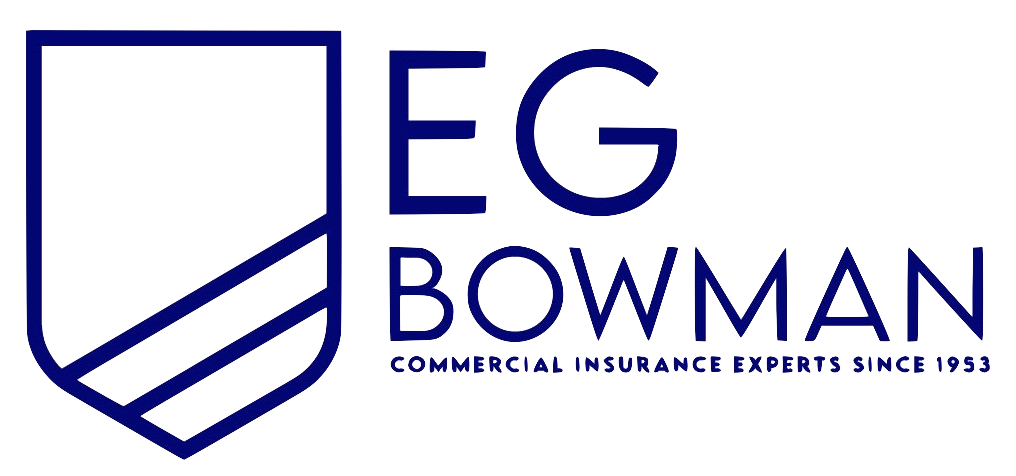
Most Common Business Policies
Index
Understanding the Basics of Transportation Insurance
Key Features of New York Transportation Insurance
Factors Influencing the Cost of Transportation Insurance in New York
How to Choose the Right Transportation Insurance in New York
Legal Requirements for Transportation Insurance in New York
Frequently Asked Questions about New York Transportation Insurance
Contact Us
Transportation insurance plays a significant role in safeguarding businesses and individuals engaged in the transportation industry. In New York, where the transportation landscape can be complex, understanding what this insurance entails is essential. This article aims to provide thorough insights into every aspect of transportation insurance in New York, including its features, costs, and legal requirements.
Understanding the Basics of Transportation Insurance
Definition of Transportation Insurance
Transportation insurance is a form of coverage designed to protect against losses that may arise during the transportation of goods or the operation of vehicles. This type of insurance encompasses several categories, including commercial auto insurance, freight insurance, and liability coverage. Policies can vary significantly based on the type of transportation and the nature of goods being transported.
In New York, transportation insurance ensures that businesses operating in logistics, freight, and commercial driving have the necessary protection to recover from unforeseen incidents, such as accidents or damages during transit. Without proper coverage, companies can face significant financial risks that could jeopardize their operations. For instance, if a shipment of perishable goods is delayed due to an accident, the financial implications can be severe, leading to spoilage and loss of revenue. This highlights the importance of selecting a policy that aligns with the specific needs of the business and the types of goods being transported.
Importance of Transportation Insurance
Having adequate transportation insurance is critical for businesses that rely on the movement of goods and services. It not only protects the financial investment involved in transporting goods but also provides peace of mind for business owners. In the event of an accident or damage to cargo, transportation insurance can cover the associated costs, such as repair bills or loss of revenue.
Moreover, transportation insurance is vital for complying with local laws and regulations. In New York, certain types of coverage are mandatory, which protects not just the business but also the public, ensuring accountability and safety standards are maintained within the industry. The regulatory landscape can be complex, with different requirements based on the type of goods being transported and the distance of travel. For example, hazardous materials may require specialized coverage to address the unique risks involved. Understanding these nuances is essential for businesses to remain compliant and avoid potential fines or legal issues.
In addition to legal compliance, transportation insurance can enhance a company's reputation. Clients and partners are more likely to trust businesses that demonstrate a commitment to risk management and safety. By investing in comprehensive transportation insurance, companies can showcase their dedication to protecting their assets and ensuring reliable service delivery. This not only fosters customer loyalty but can also lead to increased business opportunities as stakeholders recognize the value of working with a well-insured and responsible partner in the logistics and transportation sector.

Key Features of New York Transportation Insurance
Coverage Options
New York transportation insurance offers a range of coverage options tailored to meet the diverse needs of businesses. Common coverage types include:
- Liability Coverage: Protects against claims resulting from injuries or damages to third parties.
- Physical Damage Coverage: Covers damages to vehicles due to accidents or theft.
- Cargo Insurance: Ensures that goods in transit are protected against loss or damage.
- Workers’ Compensation: Provides coverage for employees injured while working.
Each option can be customized based on the type of transportation service being offered, the vehicle used, and the specific risks associated with the goods being transported. For example, businesses that transport perishable goods may require specialized cargo insurance that covers spoilage, while those dealing with high-value items might seek additional coverage to protect against theft or damage during transit. Additionally, some providers offer endorsements that can be added to a policy to cover unique circumstances, such as temporary increases in cargo value during peak seasons or specific routes that may present higher risks.
Policy Limitations
While transportation insurance offers critical protections, it's important to understand its limitations. Policies often have exclusions that may affect claims. For instance, some policies might not cover acts of God, such as earthquakes or floods, unless specifically included. Additionally, businesses must also be aware of the deductibles, which are amounts they must pay out-of-pocket before insurance kicks in.
Furthermore, full coverage might be financially burdensome, leading some businesses to opt for minimum coverage that may not provide sufficient protection. Choosing the right balance between coverage and cost is essential for any transportation-related business. It is also crucial for business owners to regularly review their policies, as changes in operations, such as the addition of new routes or vehicles, can impact their coverage needs. Staying informed about industry trends and regulatory changes can help businesses make proactive adjustments to their insurance policies, ensuring they remain adequately protected against evolving risks in the transportation landscape.
Factors Influencing the Cost of Transportation Insurance in New York
Vehicle Type and Usage
The type of vehicle used and its intended use significantly influence the cost of transportation insurance in New York. Commercial vehicles, such as trucks and vans, typically incur higher premiums due to their larger size and greater risk of accidents compared to passenger vehicles.
Moreover, how often and where the vehicle is used can also impact costs. Vehicles used for long-haul transportation might attract higher premiums compared to those used locally, owing to increased risk factors associated with longer distances. Additionally, the cargo being transported plays a crucial role; for instance, transporting hazardous materials or high-value goods can lead to even higher insurance costs, as the potential for loss or damage is greater. Insurers often evaluate the nature of the goods being transported, which can lead to specialized coverage requirements and further influence premium rates.
Driver's Record and Experience
The driver’s history and experience play a vital role in determining insurance costs. Insurance providers assess the driving record, looking at factors such as previous accidents, traffic violations, and overall experience. A clean driving record can help lower premiums significantly, while a history of accidents can result in higher costs.
Furthermore, experience factors into pricing; new or inexperienced drivers are often viewed as high-risk, resulting in elevated insurance rates. Organizations hiring new drivers should consider the implications on their insurance premiums and take steps to mitigate risks wherever possible. This could include implementing rigorous training programs and monitoring driving behaviors through telematics systems. Such proactive measures not only help in reducing insurance costs but also enhance overall safety on the roads, which is beneficial for both the drivers and the public. Additionally, insurers may offer discounts for companies that demonstrate a commitment to safety and risk management, further incentivizing responsible driving practices.
How to Choose the Right Transportation Insurance in New York
Assessing Your Needs
Before selecting transportation insurance, it’s crucial to assess the specific needs of your business. Consider the types of goods transported, typical routes, and the overall risk profile. Evaluate the vehicles used and the number of drivers employed. Collecting this information allows for a tailored approach to identifying coverage requirements.
Additionally, businesses should periodically review their insurance needs as they grow or if they change their operational strategies, which may affect the scales of risk involved. For instance, if a business expands its service area to include more urban environments, it may face different risks such as increased traffic congestion and higher theft rates. Understanding these dynamics can help in selecting the most appropriate coverage options, ensuring that the policy evolves alongside the business.
Comparing Insurance Providers
Choosing the right insurance provider can make a significant difference in the quality of service and coverage received. It’s imperative to compare multiple insurance providers regarding their offered policies, premium rates, customer service reputation, and claims processing efficiency.
Reading reviews, seeking recommendations, and consulting with insurance brokers can aid in making an informed decision. A provider with a good established reputation and reliable claims support can enhance a business's security and reduce anxiety associated with potential claims. Furthermore, it’s beneficial to inquire about any additional services that providers may offer, such as risk management consultations or safety training programs. These value-added services can not only help mitigate risks but may also lead to lower premiums over time, making them an important consideration in your decision-making process.
Navigating the Claims Process
Reporting an Incident
The claims process can often seem daunting. However, knowing how to navigate it effectively can minimize stress when accidents occur. The first step is documenting the incident thoroughly, which includes gathering details such as photos, witness statements, and any police reports. This documentation serves as a crucial foundation for your claim, as it provides the necessary evidence to support your case. Consider using your smartphone to take clear, timestamped photos of the scene, as well as any damages to vehicles or property involved. Additionally, writing down your own account of the incident while it is still fresh in your mind can be invaluable.
Once sufficient information is available, the incident should be reported to the insurance company as soon as possible. Each insurance provider will have specific steps to initiate a claim, so being familiar with these can expedite the process. Some companies even offer mobile apps that allow you to file a claim directly from your phone, making it easier to submit your information quickly. Remember to keep a record of all communications with your insurer, including dates, times, and the names of representatives you speak with, as this can help clarify any misunderstandings later on.
Understanding the Settlement Process
After a claim is filed, understanding what to expect regarding the settlement process is essential. The insurance company will assess the claim based on the provided evidence, and a claims adjuster will typically be assigned to evaluate the case. They will investigate the details surrounding the incident and determine the appropriate compensation based on policy terms. This process can take time, as the adjuster may need to consult with experts, such as auto repair professionals or medical specialists, to accurately gauge the extent of damages or injuries.
Communicating regularly with the insurance provider during this phase can be beneficial. Being proactive can help resolve any delays and ensure a smooth settlement process. It’s also wise to familiarize yourself with the terms of your policy, as this knowledge can empower you during discussions with the claims adjuster. If you feel that the initial settlement offer does not adequately reflect your losses, don’t hesitate to negotiate. Providing additional documentation or expert opinions can strengthen your case and potentially lead to a more favorable outcome.
Legal Requirements for Transportation Insurance in New York
Minimum Coverage Requirements
New York has specific legal requirements regarding transportation insurance that all companies must comply with. For commercial vehicles, the minimum liability insurance required includes coverage for bodily injury, property damage, and personal injury protection. Adhering to these legal standards is not only a matter of regulatory compliance but also critical in protecting the financial interests of the business. Moreover, businesses must also consider additional coverage options such as cargo insurance, which protects goods being transported against loss or damage, and uninsured/underinsured motorist coverage, which can provide further financial security in the event of an accident involving a driver lacking sufficient insurance.
Additionally, businesses involved in interstate transportation may need to meet federal requirements, which can be even more stringent. Familiarity with both state and federal laws is essential for business owners, ensuring comprehensive coverage that satisfies all legal obligations. This dual-layer of regulation can be complex, as federal guidelines set by the Federal Motor Carrier Safety Administration (FMCSA) may impose higher minimums or additional requirements, necessitating a thorough understanding of both jurisdictions to avoid lapses in coverage.
Penalties for Non-Compliance
Failure to comply with New York’s transportation insurance requirements can result in severe penalties, including hefty fines or suspension of operation. Non-compliance can also lead to legal issues and loss of credibility within the industry, affecting business relationships and future opportunities. In some cases, repeated violations may lead to more severe consequences, including the revocation of business licenses or permits, which can significantly hinder a company's ability to operate effectively.
Thus, it is crucial for transportation businesses to maintain adequate insurance coverage and regularly review their policies to ensure compliance with evolving regulations. Engaging with a knowledgeable insurance broker who specializes in transportation can help businesses navigate these complexities, ensuring that they not only meet minimum requirements but also tailor their coverage to address specific risks associated with their operations. Regular training and updates for staff on compliance matters can also play a vital role in fostering a culture of accountability and awareness within the organization, ultimately safeguarding the business against potential pitfalls.

Frequently Asked Questions about New York Transportation Insurance
Can I Get Transportation Insurance If I Have a Poor Driving Record?
Obtaining transportation insurance with a poor driving record may pose challenges, but it is not impossible. Many insurance providers specialize in high-risk drivers and may offer policies, although often at a higher premium.
Individuals may also consider improving their driving record before seeking insurance or look for providers that take into account other factors, such as time spent without a claim. Shopping around and comparing options is key to finding a suitable policy. Additionally, taking defensive driving courses can sometimes help lower premiums, as these courses demonstrate a commitment to safer driving practices. Some insurers even offer discounts for completing such programs, which can be beneficial for those looking to mitigate the impact of their driving history on insurance costs.
What Happens If I Don’t Have Enough Coverage?
Having insufficient transportation insurance coverage can lead to significant financial repercussions. In the event of an accident, businesses may find themselves liable for damages that exceed their insurance limits, resulting in out-of-pocket expenses that can devastate operations.
Moreover, operating a vehicle without meeting state-required limits can lead to legal penalties, including fines and loss of license. Therefore, it is vital for businesses to assess their coverage needs thoroughly and ensure that they are adequately protected. It’s also important to consider the potential impact on reputation; a business that frequently faces legal issues due to inadequate insurance may struggle to maintain customer trust. Regularly reviewing and updating insurance policies in accordance with changes in business operations or regulations can help mitigate risks and ensure compliance, ultimately safeguarding the business's future.
In conclusion, navigating the landscape of transportation insurance in New York is a complex yet essential endeavor for businesses in the industry. Understanding the various aspects, from basic definitions and coverage types to navigating the claims process and compliance with legal requirements, can empower business owners to make informed decisions that protect their investments and ensure operational continuity.
All Rights Reserved | E.G. Bowman | Privacy Policy | Legal Disclaimer | Sitemap | Built & SEO'd by Convirtue
